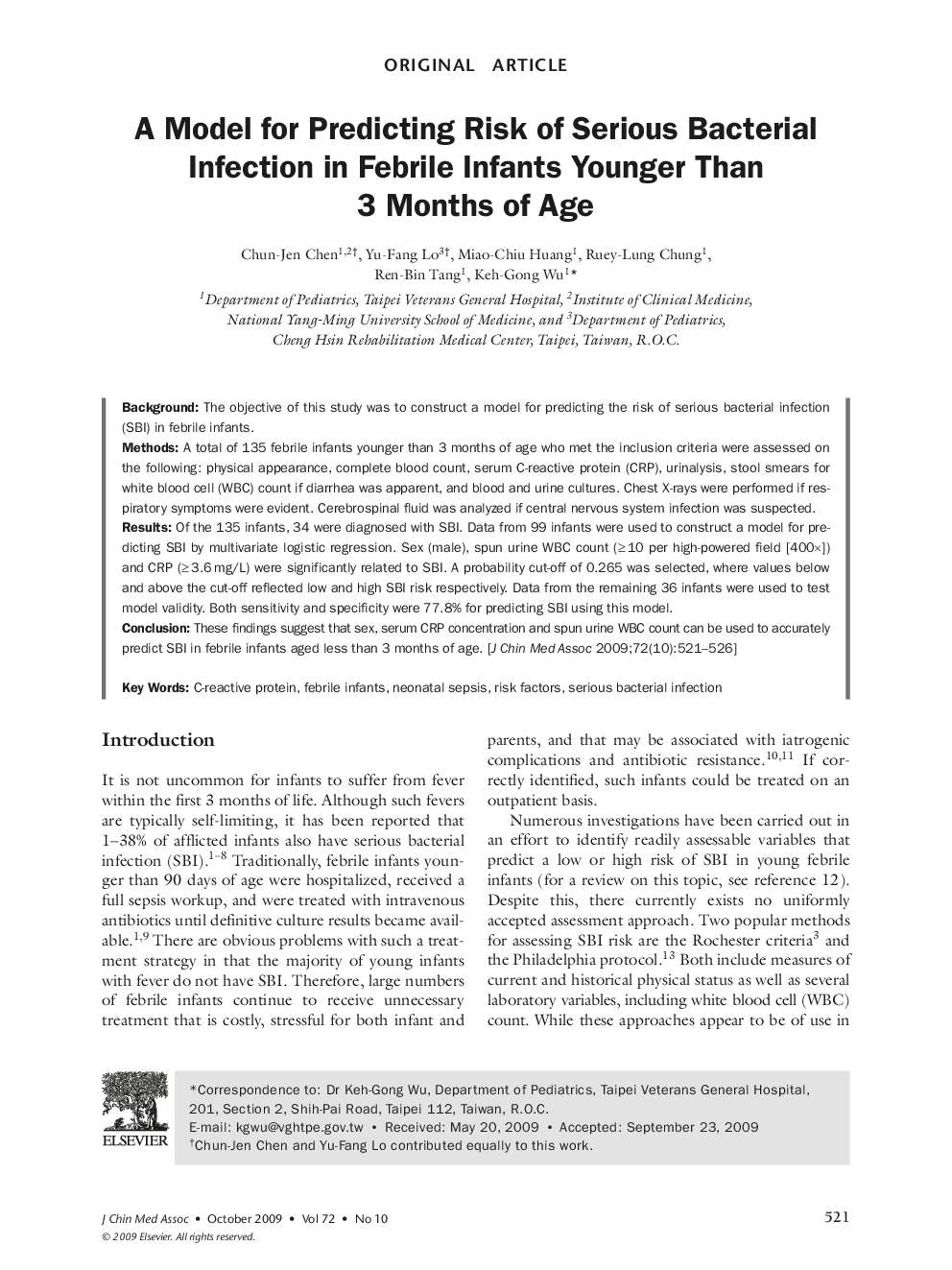| Article ID | Journal | Published Year | Pages | File Type |
|---|---|---|---|---|
| 3476759 | Journal of the Chinese Medical Association | 2009 | 6 Pages |
BackgroundThe objective of this study was to construct a model for predicting the risk of serious bacterial infection (SBI) in febrile infants.MethodsA total of 135 febrile infants younger than 3 months of age who met the inclusion criteria were assessed on the following: physical appearance, complete blood count, serum C-reactive protein (CRP), urinalysis, stool smears for white blood cell (WBC) count if diarrhea was apparent, and blood and urine cultures. Chest X-rays were performed if respiratory symptoms were evident. Cerebrospinal fluid was analyzed if central nervous system infection was suspected.ResultsOf the 135 infants, 34 were diagnosed with SBI. Data from 99 infants were used to construct a model for predicting SBI by multivariate logistic regression. Sex (male), spun urine WBC count (≥ 10 per high-powered field [400 ×]) and CRP (≥ 3.6 mg/L) were significantly related to SBI. A probability cut-off of 0.265 was selected, where values below and above the cut-off reflected low and high SBI risk respectively. Data from the remaining 36 infants were used to test model validity. Both sensitivity and specificity were 77.8% for predicting SBI using this model.ConclusionThese findings suggest that sex, serum CRP concentration and spun urine WBC count can be used to accurately predict SBI in febrile infants aged less than 3 months of age. [J Chin Med Assoc 2009;72(10):521–526]
